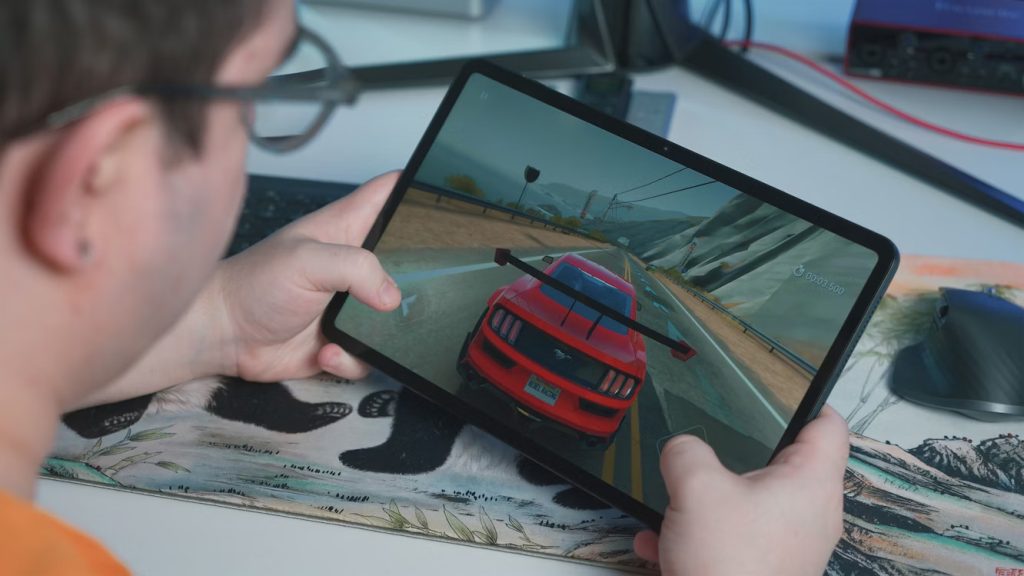How Gadgets Hinder Speech and Tips to Reduce Their Impact

Handheld gadgets like smartphones and tablets have transformed how we communicate and interact. These devices are now integral to daily life, offering instant access to information, social media, and communication platforms. However, the growing reliance on gadgets raises concerns about how gadgets hinder speech development and affect the quality of social interactions. While they enhance connectivity, they can also contribute to isolation and shallow engagements. This exploration delves into the profound effects of handheld gadgets on social interaction, highlighting both their benefits and the challenges they pose in today’s increasingly digital world.
How Gadgets Hinder Speech Development
-
Limited Social Interaction
Excessive gadget use can limit kids’ opportunities for social interaction, which is vital for their speech development. Children learn language through conversations with caregivers, peers, and their surroundings. When they spend too much time on devices, they might miss out on these essential interactions, which can hinder their ability to acquire language skills effectively. Kids must engage with others to develop their communication abilities fully.

-
Passive Consumption
Many gadgets promote passive content consumption, like watching videos or listening to audio, which doesn’t encourage active participation. This kind of engagement is less effective for stimulating language development than interactive activities such as conversations, storytelling, and pretend play. For children to develop strong communication skills, they must prioritize these interactive experiences that foster active engagement and learning.
-
Reduced Verbal Communication
Extended gadget use can lead to less verbal communication among children. Rather than participating in face-to-face conversations and expressing themselves through words, they may rely more on non-verbal cues or gestures. This shift can delay the development of their expressive language skills, making it crucial for caregivers to encourage more verbal interactions and conversations.
-
Limited Vocabulary Exposure
While gadgets can provide educational content, they often expose children to a narrower range of vocabulary compared to real-world experiences and interactions. To truly expand their language skills, children need diverse vocabulary exposure in different contexts, something that excessive gadget use can limit. Engaging in real-life conversations and activities allows kids to encounter various words and expressions, helping them develop their language abilities more effectively.
-
Attention and Focus Issues
Prolonged gadget use can lead to attention and focus issues on children, which may indirectly affect their speech development. Sustained attention is essential for active listening, processing language, and engaging in meaningful conversations. When children struggle to concentrate, they may miss meaningful interactions and language cues, hindering their ability to develop strong communication skills. Balanced gadget use alongside interactive activities can support their focus and speech development.
-
Delayed Speech Milestones
Research has found a link between excessive gadget use and delays in speech milestones in children. Those who spend more time on devices often show speech sound production, word formation, and sentence structure delays. It underscores the importance of balancing gadget use with engaging, interactive activities that promote healthy speech development and encourage practical communication skills.
Tips to Reduce the Negative Impact of Gadgets
-
Limit Screen Time
It’s important to set reasonable limits on gadget use for children, including both recreational and educational screen time. Please encourage them to participate in alternative activities that promote active engagement and social interaction, such as reading, playing outside, or engaging in creative play. This balance not only supports their development but also helps strengthen their communication skills and relationships with others.
-
Encourage Interactive Play
Encourage interactive play activities that promote language development, such as storytelling, role-playing, and board games. These activities foster imagination, creativity, and verbal communication skills.

-
Provide Rich Language Experiences
Creating a language-rich environment at home is essential for children’s development. Make it a habit to read books together, engage in meaningful conversations, and sing songs. Daily exposure to diverse vocabulary through various activities can significantly enhance their language skills. By incorporating these practices into your routine, you’ll help foster a love for language and encourage effective communication from an early age.
-
Model Healthy Tech Habits
Becoming a positive role model for your children involves demonstrating healthy tech habits yourself. Limit screen time, especially during family interactions, and prioritize face-to-face communication. Show them the importance of engaging in conversations and spending quality time together without distractions. Practicing these habits will encourage children to develop a balanced relationship with technology while valuing meaningful connections.
-
Seek Professional Guidance
If you have concerns about your child’s speech development, seeking guidance from a pediatrician or speech-language pathologist is essential. Early intervention addresses speech delays and fosters healthy language growth. Taking action sooner rather than later can help ensure your child receives the support they need to develop strong communication skills.
5 Benefits of Gadgets in Learning
With the vast wealth of online knowledge, students no longer rely solely on parents and teachers for learning. They can easily find top assignment writing services in the UK to help them complete their work efficiently. Beyond research, students use the internet to enhance their lessons and learning experiences. By leveraging this advanced technology, they can significantly boost their knowledge and skills, making education more accessible and personalized.
Technology can be a powerful ally in supporting children’s education. Introduce your child to the best educational websites and apps that align with their interests. These resources can serve as valuable tools for studying and conducting research. Kids love engaging with educational games, including challenging brain teasers, online quizzes, and language tutorials. Integrating these interactive tools into their learning routine can help make education fun and effective!
-
Improvement of Communication
In the past, sending a letter could take days or even months to arrive, which often made communication feel slow and cumbersome. With the rise of email, staying in touch has become incredibly simple and instant. You can send a message and have it delivered in seconds, making it easier than ever to connect with friends, family, and colleagues, no matter where they are. This shift has transformed communication, allowing quicker responses and more dynamic conversations.
A wealth of technology is available that simplifies everyday life, particularly for students. Students can quickly work more efficiently and manage their academic tasks with the right tools. Technology enables them to complete assignments more rapidly and effectively, whether it’s a lengthy research paper or a complex dissertation. It helps them stay organized and enhances their overall learning experience.
One of the key benefits of modern gaming technology for children is its positive impact on motor skill development. When children engage with games on tablets or smartphones, they get to exercise small muscles in their lips, wrists, fingers, and even toes, all of which are important for fine motor skills. Playing on portable devices provides a safe environment for this exercise, reducing the risk of injuries during outdoor play. Overall, these gaming experiences can strengthen their coordination and agility in a fun and engaging way.
5 Drawbacks of Gadgets in Learning
-
Addiction
Students who become overly addicted to gaming, texting, phone use, or internet communication face significant challenges. This addiction can lead to a decline in their learning and academic performance, as they may neglect their homework and other responsibilities at home. The distraction of these activities can take away valuable time that could be spent on studying or engaging in productive tasks, ultimately hindering their educational progress. Balancing technology use is essential to ensure students can benefit from it without compromising their academic success.

-
No Interest in Studying
Today, students have the power to shape their study habits, which can either lead to a lackadaisical attitude or a genuine desire to learn valuable information. Many rely on spell checkers, which can make them less attentive to spelling and grammar, often leading to frequent misspellings. Furthermore, this dependence on the internet for answers rather than consulting books or asking teachers for guidance can cause them to forget fundamental concepts taught in school. Students must balance using technology as a resource and engaging actively in their learning process to build strong academic skills.
-
Radiation Exposure
Radiofrequency exposure can pose risks to your child’s health, and it’s essential to be aware of this. Modern appliances emit radiation, and prolonged use can potentially be harmful. To ensure your child’s safety, limiting their screen time and technology use is essential. Additionally, protecting them from excessive radiation can reduce potential risks. Encouraging a healthy balance between technology use and other activities is crucial in protecting their well-being.
-
Violence
Children can sometimes develop aggressive behaviors through excessive exposure to video games. Research suggests that kids who become overly attached to technology and gaming are more likely to challenge or disobey their parents and teachers. It can lead to difficulties in managing relationships and respecting authority figures. Parents need to monitor the types of games their children play and encourage a balanced approach to gaming that includes discussions about appropriate behavior and consequences.
-
Creativity
In the past, students often spent their free time reading books, socializing with friends, or engaging in physical activities. However, technology is gradually diminishing their participation in these creative pursuits. As a result, many children lose touch with their imagination and sense of humor. This shift highlights the importance of encouraging a balance between screen time and activities that foster creativity and social interaction, allowing kids to develop inventive skills and enjoy meaningful connections.
Conclusion
Gadgets provide valuable benefits in entertainment and education, but excessive use can negatively affect speech development in children. Understanding these potential impacts and implementing healthy tech habits is crucial. Creating a language-rich environment at home is essential, as parents and caregivers play a vital role in supporting children’s speech development and overall well-being. Striking a balance between the advantages of technology and real-world interactions is critical, as these interactions nurture language skills and enhance social communication abilities. By fostering this balance, we can help children thrive linguistically and socially.


